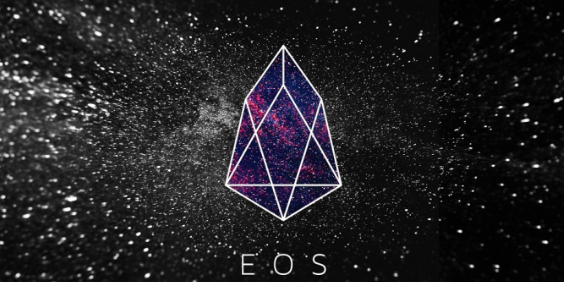 In the current blockchain ecosystem, the RAM (Random Access Memory) of EOS tokens plays a vital role. With the continuous development of blockchain technology and the rise of decentralized finance (DeFi), EOS RAM is no longer just a simple storage medium, it has become a core component of the entire EOS ecosystem. This article will delve into the critical role of EOS RAM, its historical background, market dynamics, and its diverse uses in the Web3 economy.
In the current blockchain ecosystem, the RAM (Random Access Memory) of EOS tokens plays a vital role. With the continuous development of blockchain technology and the rise of decentralized finance (DeFi), EOS RAM is no longer just a simple storage medium, it has become a core component of the entire EOS ecosystem. This article will delve into the critical role of EOS RAM, its historical background, market dynamics, and its diverse uses in the Web3 economy.
The key role of EOS RAM
EOS RAM is critical to the functioning of the blockchain. It not only stores the working status of the chain, but also saves elements such as contract tables, account permissions, and lightweight verification structures in the physical memory to achieve efficient data access and transaction processing. This process ensures seamless operation and growth of EOS applications. In comparison, less critical data is stored on slower disk storage. Therefore, RAM is not only a storage tool, but also a basic component that supports the overall performance and functionality of the EOS ecosystem.
Bancor Algorithm: Enhanced EOS RAM Trading
EOS utilizes a free market system to allocate its limited RAM resources. Users can buy and sell RAM through the EOS token native to the blockchain. This process not only ensures market liquidity, but also helps discover reasonable prices for RAM. As the availability of unallocated RAM decreases, the automated market maker (AMM) increases the price of remaining RAM. This market operation is controlled by the Bancor Relay algorithm to ensure the effectiveness of the dynamic pricing mechanism.
History of EOS RAM
Since the launch of the EOS blockchain in June 2018, the supply of RAM has undergone significant changes. Initially, EOS came with 64GB of RAM, which was gradually increased to support network growth. However, as the supply of RAM began to exceed 400GB, the market's concerns about its oversupply and undervaluation gradually increased. On December 17, 2023, the blockchain community reached a consensus and put forward a proposal to prevent RAM inflation, further increasing the scarcity and value of RAM.
RAM Market Dynamics and Liquidity: Following the implementation of proposals to stop RAM inflation, the EOS ecosystem witnessed a surge in interest in RAM, with prices increasing six-fold from all-time lows. Increased activity from individual users, dApp developers, and new projects highlights RAM’s critical role in blockchain operations. The EOS RAM market has demonstrated extraordinary liquidity, even surpassing USDT, the most liquid currency pair on Defibox, reflecting strong market demand.
Each RAM transaction generates a 0.5% transaction fee driven by the Bancor Relay algorithm, bringing considerable revenue to the EOS Resource Exchange (REX). This mechanism facilitated the inflow of more than 78,000 EOS in just one month, providing additional revenue opportunities for EOS stakeholders.
The relationship between EOS RAM and the dApp ecosystem
In the EOS ecosystem, the use of dApps further amplifies the demand for RAM. For example, Upland is a well-known dApp on EOS with 2.5 million users as of May 2022, and its operation requires 6.7GB of RAM. This phenomenon not only reflects the critical role of RAM in dApp functionality and expansion, but also emphasizes its importance in the entire EOS network.
Interaction between EOS EVM and RAM: With the launch of EOS EVM, the demand for RAM usage continues to increase. EOS EVM integrates the native resources of EOS with the EVM framework and generates a fee of more than 308,025 EOS, part of which is used to purchase approximately 1.8GB of EOS RAM to enhance the memory storage capacity of EVM. This development shows the strong connection between RAM demand and dApp functionality.
Various uses of RAM
EOS RAM is not just a storage tool, it plays a diverse role in blockchain functions. It supports a series of operations from account creation to dApp execution and is an important resource for user management. Especially in terms of EOS native inscriptions, due to its high transaction capacity, EOS Native's inscriptions have great potential, making it an ideal choice for traditional data recording and unique inscription methods.
In addition, the RAMS project, as a RAM-based inscription project, demonstrates the active participation and innovation of the community. As the price of RAM increased, the project gained more attention, promoting the development of functions such as the protogenesis link exchange and the RAM trading market.
in conclusion
In general, as the cornerstone of blockchain performance and efficiency, the importance of EOS RAM cannot be ignored. As market demand for RAM continues to increase, the vitality and economic framework of the EOS ecosystem continue to evolve. Whether it is enhancing transaction liquidity through the Bancor algorithm or driving RAM consumption through the use of dApps, EOS RAM has shown great potential and value in the Web3 economy.
Users should always remain vigilant, conduct thorough research and proceed with caution when participating in DeFi projects. Although EOS RAM has promising prospects, participants still need to be aware of the risks and challenges involved. Hopefully this article has provided you with an in-depth understanding of EOS RAM and helped you make informed decisions in this rapidly evolving field.